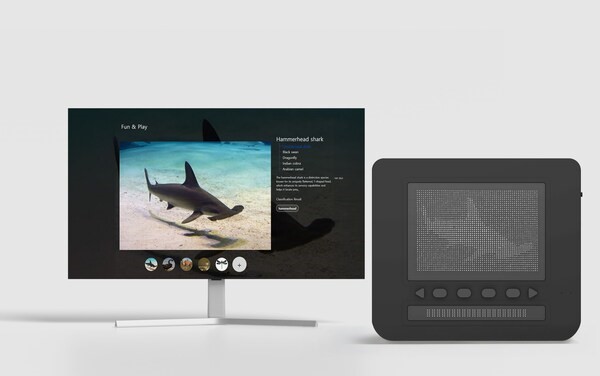Partnership in Tech improves opportunities for visually impaired
Dot Inc. has announced the debut of DotVista, an AI picture identification and conversion project in partnership with Microsoft and Hanyang University. By transforming photos into tactile experiences on the Dot Pad, this creative solution allows the blind and visually impaired to investigate animal features, including the broad wings of a dragonfly and the stately hump of a camel. Additionally, because of visualization-intensive duties like quality control, workers can now access professions that were previously exclusively accessible to sighted workers.

By Q2 2025, DotVista will only be accessible on Windows 11 thanks to this partnership; additional operating systems and industries will be supported in 2026. DotVista is expected to be formally released on the Windows platform in the second quarter of 2025. It is intended to provide both commercial and educational features, greatly improving accessibility and educational opportunities for visually impaired users in a variety of industries.
DotVista Debut at Microsoft Ignite
Dot Inc. created the Dot Pad, a tactile display for the blind and visually handicapped that uses touch to convey information by converting text, graphics, and graphs into braille. By providing shapes and forms of images and graphs in a tactile manner, Dot Pad goes beyond basic braille output and significantly improves information accessibility in daily life, work, and education. With the help of this tool, people who are blind or visually impaired can engage with a wide variety of material more thoroughly and efficiently.
DotVista began as a ground-breaking educational tool that converted complicated photos into tactile braille, enabling visually impaired users to understand object shapes. DotVista is now a flexible tool with a wide range of uses thanks to an open-source paradigm and a Windows-based AI foundation. A supply chain manager of a big grocery chain, for example, can use DotVista to quickly evaluate the freshness of food and easily identify the ideal condition of fruits and vegetables. DotVista revolutionizes workflow efficiency by utilizing on-device NPU and local models to accomplish previously difficult jobs with previously unheard-of ease and speed.
Key Features of DotVista: Accessible Zoo and Fruits Classification
Fruits Classification and Accessible Zoo are DotVista’s two primary features. By pressing the braille dots on the Dot Pad tactile display, children with visual impairments can investigate the shapes of animals and famous historical sites like the Eiffel Tower in the classroom thanks to Accessible Zoo. Additionally, by offering both tactile and descriptive information, Fruits Classification, a commercial feature, can help visually impaired workers assess product quality, including fruit freshness, improving their interaction and comprehension of fresh produce.
The innovative collaboration with Professor Yongjae Yoo and his research group at the Department of Artificial Intelligence at Hanyang University ERICA is the reason for the DotVista app on Windows project. Professor Yoo joined this project because of his strong interest in AI convergence research, particularly with regard to assistive technology. Last year, he was awarded the IEEE Transactions on Haptics annual Best Paper award. He stated, “I believe Korea’s innovative startup technology will enrich the lives and education of visually impaired adults worldwide. This collaboration with Dot and Microsoft marks an exciting step forward in advancing joint research on AI.”
Dot intends to further develop DotVista in order to address the accessibility issues that the visually impaired community encounters globally through its partnership with Microsoft and Hanyang University. DotVista is positioned to increase employment prospects and improve accessibility across a variety of industries by utilizing AI-powered products like Copilot+PC and Windows 11, making a significant global effect for the 280 million+ visually impaired users globally.
Picture Source: DotInc